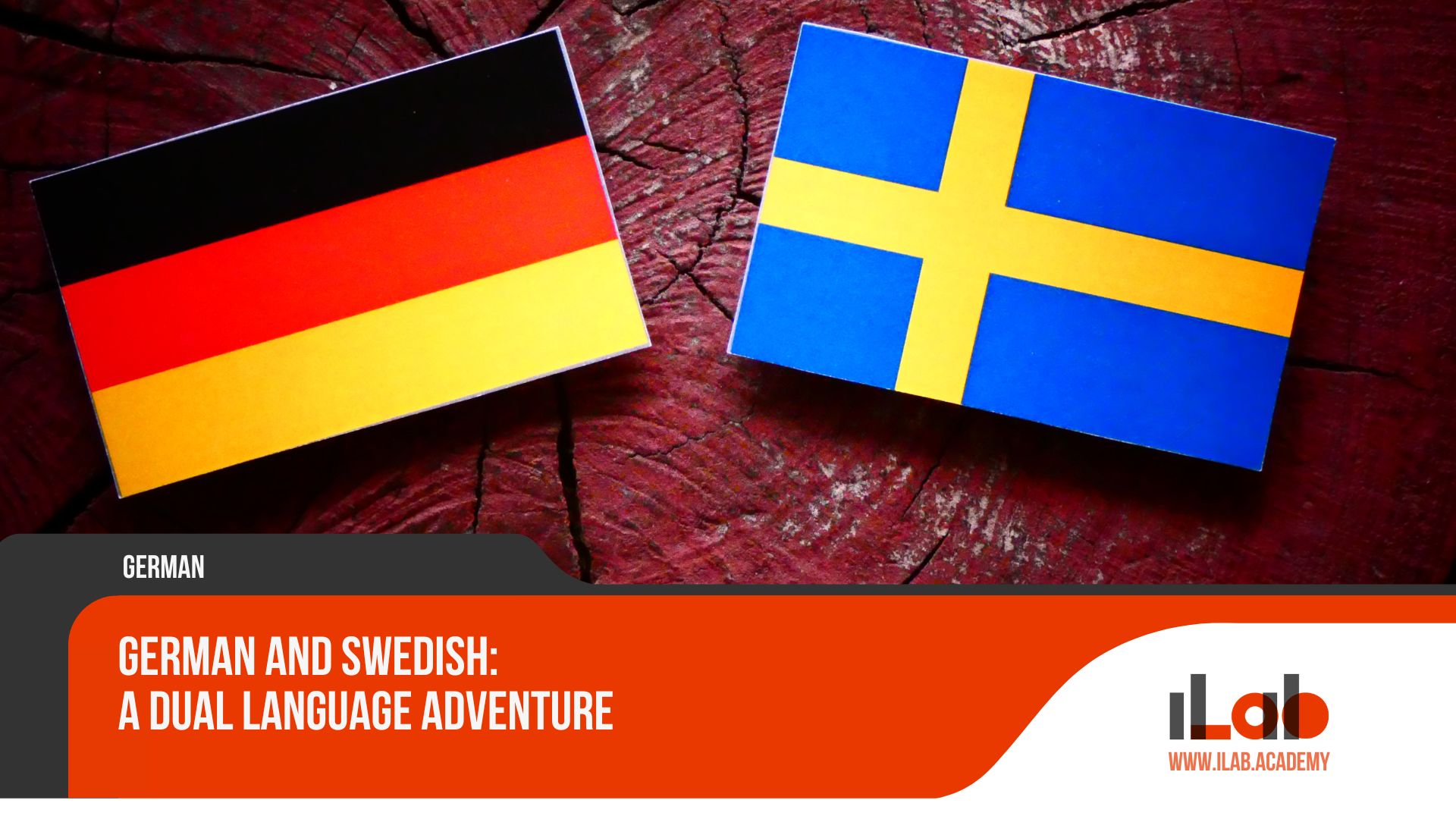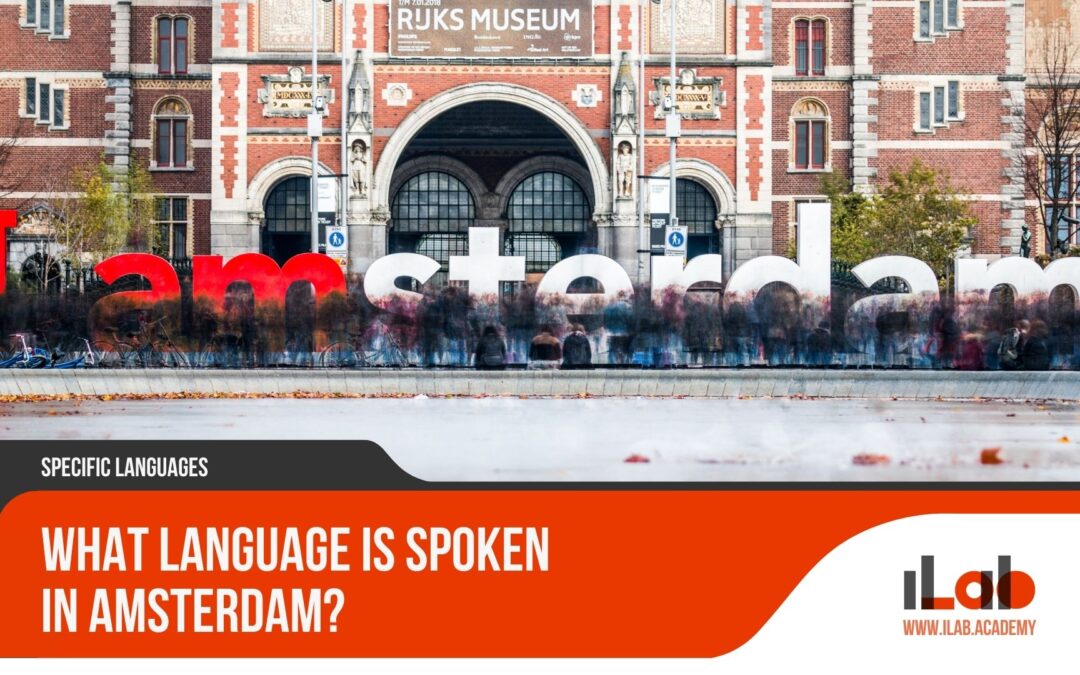Table of contents
Commence on a thrilling dual language adventure with German and Swedish! Both languages spring from the Germanic family, offering fascinating similarities and unique challenges. Master shared vocabularies like “språka” and “Arbeit” while steering through false friends such as “ost.” Immerse yourself in grammar where German’s dynamic cases contrast with Swedish’s melodic intonations. With these languages, you reveal diverse cultures and exciting career opportunities. Why not leverage apps, textbooks, and language exchanges to enhance your journey? Explore historical influences and master each language’s quirks to bridge communities across Europe. Experience how these languages enrich personal growth and open new paths in academia.
Similarities and Differences
Commence on the fascinating journey of exploring German and Swedish, two languages rooted in the Germanic family that share intriguing similarities and differences. While both languages boast shared vocabulary, learners should watch out for false friends that could trip them up. Immerse yourself in their grammar and pronunciation: compare the structural nuances and distinct sounds that make each language unique, sparking curiosity and enhancing your language learning adventure.
Brief overview of German and Swedish in the Germanic language family
German and Swedish, both integral parts of the Germanic language family, share a fascinating historical lineage that dates back to Proto-Germanic origins. This common ancestry is a cornerstone for understanding the similarities and differences between these languages. Originating from the Proto-Germanic language spoken around 3700 years ago, German and Swedish diverged into distinct branches: West-Germanic for German and North-Germanic for Swedish. This divergence occurred approximately 2100 years ago, leading to the unique characteristics seen in each language today.
Despite their split, both languages exhibit shared grammatical structures, reflecting their common roots. For instance, they both possess gendered nouns, though the complexity differs; German uses three genders, while Swedish simplifies with two. In addition, historical language developments, such as the influence of Low German on Swedish during the Hanseatic League era, illustrate the interconnectedness within the Germanic family.
As learners explore these languages, recognizing their shared foundation can ease the process. Understanding this historical context not only enriches the learning experience but also emphasizes the broader connections within the Germanic language family. Embrace this dual adventure, and uncover the linguistic tapestry woven by history.
Vocabulary: Shared words and false friends
Building upon the historical roots of German and Swedish within the Germanic language family, their shared vocabulary is a demonstration of their common ancestry. This connection is most evident in words like “language” (German: Sprache, Swedish: språk) and “work” (German: Arbeit, Swedish: arbete), showcasing the linguistic ties that bind these languages together. By recognizing these similarities, learners can leverage their knowledge to streamline the learning process, using familiar words as stepping stones across both languages. However, this journey is not without its challenges.
False friends, words that sound similar but differ in meaning, can lead to amusing or confusing situations. For instance, while “ost” means “east” in German, it translates to “cheese” in Svenska language. Such discrepancies require careful attention to context and meaning, serving as a reminder that language learning involves more than just vocabulary memorization. Are you ready to explore these linguistic landscapes and avoid the pitfalls? Embrace this adventure with curiosity and perseverance. By understanding the shared roots and false friends, you can confidently navigate the complexities of German and Swedish vocabulary, enhancing your dual language learning experience.
Grammar: Key structural comparisons
When delving into the grammar of German and Swedish, learners will find both similarities and stark differences that define their unique linguistic structures. Both languages, rooted in the Germanic family, share certain grammatical features, yet they diverge in critical ways. German is characterized by its complexity with three grammatical genders—masculine, feminine, and neuter—requiring careful attention to noun gender for correct article and adjective usage. Conversely, Swedish simplifies this with only two genders, common and neuter, streamlining the learning process.
Additionally, German employs four grammatical cases, intricately affecting sentence structure and noun forms, whereas Swedish bypasses this complexity entirely, opting instead for a fixed word order. This makes Swedish more akin to English, allowing for an easier shift for English speakers. Significantly, Swedish verbs remain unchanged across number and person, simplifying conjugation, while German verbs demand more intricate adjustments.
As learners explore these languages, understanding these structural nuances is imperative. This knowledge not only aids in mastering each language individually but also enhances the overall dual language learning experience, offering a rewarding challenge that broadens linguistic and cognitive horizons.
Pronunciation: Distinct sounds and intonation
Exploring the unique grammar systems of German and Swedish lays the groundwork for understanding their distinctive pronunciation characteristics. Each language presents its learners with unique phonetic systems and intonation patterns that are essential for effective communication. German pronunciation is marked by its guttural sounds, such as the “R” and “CH,” and its consonants are articulated with a dental emphasis. This creates a robust, sometimes harsh acoustic quality that contrasts sharply with the melodic intonation of Swedish.
Swedish, on the other hand, features a more musical quality, with pitch changes that give it a sing-song rhythm. It includes additional vowel sounds, which can be challenging for learners but add to its melodious nature. These differences highlight the significance of mastering each language’s distinct sounds to achieve clear, natural speech.
Why is this significant for language learners? Mastering pronunciation not only aids in being understood but also enhances the listener’s perception of your competence in the language. As a result, immerse yourself in listening exercises, mimic native speakers, and practice consistently. By embracing these unique phonetic features, you’ll find yourself steering through the linguistic landscapes of German and Swedish with greater confidence and finesse.
Learning Strategies
Starting on the journey of learning both German and Swedish can be an enriching experience when leveraging their linguistic similarities to accelerate acquisition. Recognizing shared vocabulary and grammatical structures can simplify the initial stages, yet each language also presents unique challenges that must be addressed through focused study and practice. To support this endeavor, utilize recommended resources such as language apps, online courses, and vocabulary lists, which provide structured guidance and valuable tools for mastering these languages concurrently.
Leveraging similarities for faster acquisition
A strategic approach to learning both German and Swedish involves leveraging their linguistic similarities, which can greatly expedite the acquisition process. Recognizing shared vocabulary, such as “language” (German: Sprache, Swedish: språka), empowers learners to quickly build their lexicon. These languages, both stemming from the Germanic family, offer overlapping grammatical structures and sentence constructions. Such commonalities make it easier for learners to grasp new concepts without starting from scratch each time.
The shared Proto-Germanic roots of German and Swedish mean that learners can often identify patterns and predict meanings, reducing the cognitive load when shifting between the two. Lists of the most common words in both languages serve as a helpful tool, further supporting learners in drawing parallels and enhancing retention. By focusing on these similarities, one can not only boost vocabulary acquisition but also deepen understanding of sentence structure and syntax.
Utilizing these connections fosters confidence and momentum in language learning. Why not harness this advantage? Emphasize commonalities, and transform what might seem an intimidating dual endeavor into an exciting and manageable journey. As you explore both languages, let the shared linguistic heritage guide and motivate your progress.
Addressing unique challenges in each language
Tackling the distinct challenges posed by German and Swedish requires targeted learning strategies tailored to each language’s specific complexities. Understanding these challenges is essential for learners aiming to master both languages simultaneously. German’s intricacies lie in its complex grammar, including three noun genders and four cases, which demand meticulous attention. On the other hand, Swedish presents a different set of hurdles, such as mastering its melodic pronunciation and understanding its two-gender system.
To effectively address these challenges, consider the following strategies:
- Focus on Grammar Fundamentals: For German, emphasize understanding gender and case usage. Create tables or charts to visualize these elements. For Swedish, prioritize mastering word order and gender distinctions.
- Embrace Phonetic Practice: Swedish’s melodic pronunciation demands regular listening and speaking exercises. Meanwhile, German learners should focus on mastering consonant sounds and stress patterns.
- Utilize Cognates Wisely: Leverage the vocabulary similarities between the languages, but remain vigilant for false friends that could lead to confusion.
- Contextual Learning: Engage with authentic materials such as books or films in each language to observe grammar and pronunciation in context, enhancing comprehension and retention.
Recommended resources and tools
Steering through the complexities of learning both German and Swedish simultaneously can be made more manageable with the right resources and tools. Embracing a dual-language adventure requires strategic planning and access to reliable materials tailored to each language’s unique features. Language learning apps like Duolingo and Babbel offer structured lessons for German and Swedish, helping to build vocabulary and comprehension skills progressively. Furthermore, leveraging flashcards from Anki or Quizlet can aid in memorizing essential vocabulary and overcoming false cognates that may confuse learners.
For deeper immersion, online platforms such as LingQ and iTalki provide opportunities to engage with native speakers, fostering practical communication skills and cultural understanding. Lingoda is another excellent online language school for learning German. It offers:
- Live online classes 24/7 with certified native German teachers
- Small group sizes of 3-5 students
- Immersive teaching methodology developed by experts from Cambridge and Oxford
- Focus on speaking practice and real-life applications
- Flexible plans for learning at your own pace
- Ability to learn from anywhere in the world
Meanwhile, the use of language exchange forums can facilitate reciprocal learning experiences, allowing learners to practice speaking and listening in real-time.
Additionally, exploring online grammar resources and structured textbooks such as “Deutsch im Einsatz” for German and “Rivstart” for Swedish can provide extensive insights into grammar and sentence structure. By combining these resources with consistent practice and a positive mindset, learners can effectively navigate the intricacies of mastering both languages, ensuring a rewarding linguistic journey.
Take Your German Skills to the Next Level
Unlock your full potential in German language learning with Lingoda’s innovative online platform. Experience personalized instruction, flexible scheduling, and rapid progress in a supportive, interactive environment.
Cultural Insights
Understanding the cultural nuances of German-speaking countries such as Germany, Switzerland, and Austria, alongside Swedish-speaking regions like Sweden and parts of Finland, enriches the language learning experience. How do cultural traditions, historical events, and societal norms influence the way language is used in these areas? As you explore German and Swedish, embrace the cultural insights that will not only enhance your linguistic skills but also deepen your appreciation for the diverse communities connected by these languages.
German-speaking countries and Swedish-speaking regions
German and Swedish are not only languages steeped in historical significance but also serve as cultural gateways to diverse regions across Europe. The German language is prominently spoken in a variety of countries, each offering a unique cultural tapestry. Germany, Austria, Switzerland, Luxembourg, and Liechtenstein are the primary German-speaking countries, each contributing its distinct cultural elements to the language. Similarly, Swedish is primarily spoken in Sweden and Finland, where it serves as a beacon of cultural identity and heritage.
Exploring these regions provides a deeper understanding of how language and culture intertwine:
- Germany: Known for its rich history and vibrant culture, Germany offers a wealth of opportunities for language learners to immerse themselves in both the language and its cultural context.
- Sweden: The heartland of the Swedish language, Sweden is renowned for its progressive society and beautiful landscapes.
- Austria: With a rich musical and artistic heritage, Austria enhances the German language with its distinct dialects and traditions.
- Finland: Although primarily Finnish-speaking, Finland’s Swedish-speaking regions provide insight into the cultural diversity within the country.
Engaging with these countries and regions can greatly enrich the dual language learning journey.
Cultural influences on language use
Cultural influences profoundly shape the way languages are used and understood within societies, and this is particularly evident in the contexts of German and Swedish. Both languages reflect their respective cultural identities, which are essential for learners to grasp in order to communicate effectively. German, with its methodical and precise nature, mirrors the cultural values of efficiency and structure prevalent in German-speaking countries. On the other hand, Swedish embodies a more egalitarian and informal style, reflecting Sweden’s cultural emphasis on equality and consensus.
Understanding these cultural contexts can illuminate why certain expressions are preferred in each language. For instance, the German penchant for compound words often conveys detailed concepts succinctly, aligning with their cultural appreciation for clarity and thoroughness. Conversely, Swedish often employs a more relaxed and straightforward syntax, resonating with the Swedish cultural preference for simplicity and directness.
Navigating these cultural nuances is essential for language learners. How can you embrace these cultural insights in your learning journey? By observing how native speakers use language in everyday situations, you can gain deeper insights into cultural norms, enhancing both linguistic proficiency and cultural competence.
Practical Benefits
Mastering both German and Swedish opens a world of career opportunities across Europe, particularly in countries like Germany, Sweden, and Switzerland. Imagine the academic and travel advantages of accessing a wealth of literature and cultural experiences in their original languages. Are you ready to enrich your personal growth and linguistic skills by embracing this dual language adventure?
Career opportunities
With proficiency in both German and Swedish, individuals can access a wealth of career opportunities across various sectors. Mastery of these languages enhances employability in international markets and provides a competitive edge in industries like technology, finance, and diplomacy. Employment prospects are broad and appealing, given the economic strength of German-speaking countries and the innovation-driven Scandinavian industries.
Consider the following career avenues:
- Multinational Corporations: Knowledge of German and Swedish is highly valued in multinational companies operating in the EU, as it enables effective communication and collaboration across borders.
- Translation and Interpretation: As globalization increases, the demand for proficient translators and interpreters who can bridge linguistic gaps in German and Swedish is significant.
- Tourism and Hospitality: Proficiency in these languages can open doors to roles in tourism, where communication with international visitors is essential.
- Education and Research: Teaching positions and research opportunities often require language skills to access a broader range of resources and collaborate internationally.
Ultimately, mastering German and Swedish not only enriches personal growth but also extends one’s career horizons, granting access to diverse roles in thriving global markets. Are you ready to commence this linguistic journey and reveal these opportunities?
Academic and travel advantages
Frequently, acquiring proficiency in both German and Swedish presents significant academic and travel advantages. Academically, these languages open doors to prestigious institutions in Germany and Sweden, renowned for their innovative research and robust educational systems. Many universities offer courses in these languages, enhancing academic versatility and providing a broader selection of study programs.
Moreover, travel becomes more enriching when one is familiar with the local language. Germany, with its rich history and cultural sites, and Sweden, known for its natural beauty and design innovation, offer unique experiences to those who can communicate effectively in the native tongue. Understanding these languages allows travelers to engage more deeply with local communities and navigate their destinations with confidence.
| Academic Advantages | Travel Advantages |
|---|---|
| Access to top universities | Enhanced cultural experiences |
| Broader academic resources | Improved communication with locals |
| Participation in exchange programs | Easier navigation of travel logistics |
Personal growth and linguistic enrichment
The academic and travel advantages of learning German and Swedish are compelling, yet the personal growth and linguistic enrichment gained from mastering these languages are equally transformative. Initiating a journey to learn both languages simultaneously can lead to profound personal development by expanding cognitive abilities and cultural awareness. Here are some key aspects of this enrichment:
- Cognitive Flexibility: Engaging with the unique grammatical structures of German and Swedish enhances cognitive flexibility, enabling learners to think more abstractly and adaptively.
- Cultural Insight: Understanding and appreciating the diverse cultural contexts behind these languages fosters a deeper connection with global communities and a more nuanced worldview.
- Emotional Intelligence: The process of language learning involves emotional resilience and patience, which can greatly contribute to personal growth and emotional intelligence.
- Creative Expression: Mastery of multiple languages offers new avenues for creative expression, allowing individuals to communicate their thoughts and ideas more effectively across different cultural boundaries.
Language Learning Journey
Starting on the journey of learning German and Swedish simultaneously requires setting realistic goals that cater to your personal pace and learning style. Have you considered how to track your progress in a way that keeps you motivated? Utilize language learning apps, join online communities, and celebrate small victories to maintain your enthusiasm and achieve your linguistic aspirations.
Setting realistic goals
When commencing a dual language learning journey with German and Swedish, setting realistic and achievable goals is essential for sustained progress and motivation. A clear, structured plan will guide learners, allowing them to balance the complexities of both languages effectively. Consider the following strategies to formulate your language goals:
- Assess Your Starting Point: Understand your current proficiency level in each language. Are you a beginner in both, or do you have a foundational knowledge of one? This assessment will inform your study plan and focus areas.
- Define Clear Objectives: Decide what you aim to achieve. Are you interested in conversational fluency, reading comprehension, or academic proficiency? Specific objectives will help tailor your learning resources and techniques.
- Break Goals into Manageable Tasks: Divide your objectives into smaller, attainable milestones. For example, aim to learn a set number of vocabulary words each week or master a particular grammatical structure monthly.
- Allocate Time Wisely: Set aside regular, dedicated time for each language, balancing your efforts based on difficulty levels and personal interests. Consistency is key to overcoming the challenges posed by German’s complexity and Swedish’s nuances.
Measuring progress and maintaining motivation
To continue a successful dual language journey with German and Swedish, it is important to not only set realistic goals but also to consistently measure progress and maintain motivation. Tracking your progress can be achieved through regular self-assessment. Test your vocabulary and grammar skills using quizzes or language apps. Are you able to understand a short story or follow a conversation? These milestones are indicators of improvement. Document your learning experiences in a journal to visualize growth over time.
Staying motivated is equally vital in this adventure. Set specific, achievable milestones and celebrate each success, no matter how small. Engage with native speakers through language exchange platforms to enhance proficiency and gain cultural insights. Surround yourself with multimedia resources, like podcasts or movies, in both languages to maintain interest. Remember, learning is a gradual process, and patience is key.
Additionally, vary your learning methods to keep the experience fresh. Incorporate games, flashcards, and music to diversify your routine. Motivation can wane, but by setting clear objectives and regularly evaluating your progress, you guarantee a rewarding and enriching journey in mastering both German and Swedish.
Conclusion
Starting on the simultaneous study of German and Swedish offers a profound opportunity for linguistic and cultural enrichment. By exploring their similarities and differences, learners can develop effective strategies that enhance language acquisition. Understand the historical context and embrace the cultural insights these languages provide. The practical benefits, from career advancements to deepening literary appreciation, are significant. This dual language journey, while challenging, promises a rewarding experience that broadens horizons and enriches understanding of European heritage. Seize this adventure.











